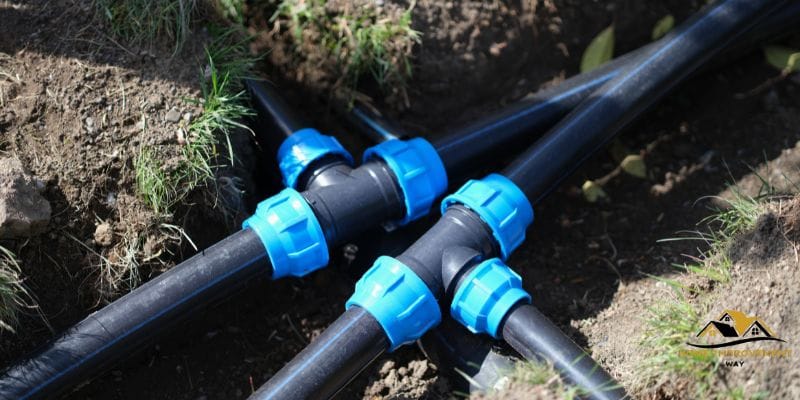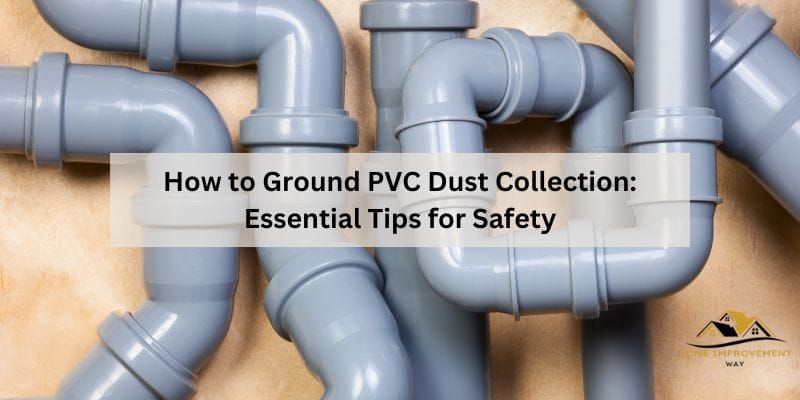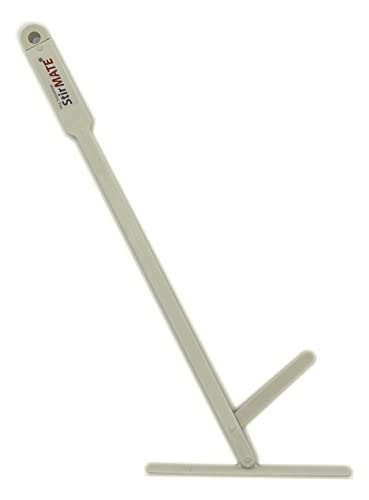How to Ground PVC Dust Collection: Essential Tips for Safety
To ground PVC dust collection, use a metallic wire and connect it to a grounding rod. When setting up a PVC dust collection system, it’s crucial to ground it properly to prevent static electricity buildup and reduce the risk of explosion.
Grounding the system involves connecting a metallic wire to the PVC pipes and fittings, and then connecting it to a grounding rod. This helps to dissipate any static charges that may build up during the dust collection process. By following the correct grounding procedures, you can ensure the safety and efficiency of your PVC dust collection system.
We’ll explore the importance of grounding PVC dust collection, the step-by-step process of grounding, and the potential hazards of not grounding the system correctly.
Understanding Pvc Dust Collection Grounding
When setting up a PVC dust collection system, it’s crucial to understand the significance of grounding. Proper grounding plays a pivotal role in the safety and efficiency of the system. Without adequate grounding, the risk of electrostatic discharge and potential hazards increases. This section will shed light on the importance of grounding in PVC dust collection and the potential risks associated with ungrounded systems.

Importance Of Grounding In Pvc Dust Collection
Grounding in PVC dust collection systems acts as a safety measure to prevent electrostatic discharge. It helps dissipate any potential buildup of static electricity, which can occur as a result of dust particles passing through the pipes. By grounding the system, the risk of sparks, fires, and explosions is significantly reduced. This not only ensures the safety of the environment but also protects valuable machinery and equipment from potential damage.
Risks Of Ungrounded Pvc Dust Collection Systems
Operating an ungrounded PVC dust collection system poses a range of risks. Without proper grounding, static electricity can accumulate within the system, leading to potential hazards such as combustible dust fires and explosions. Additionally, ungrounded systems can result in damage to electronic components, causing operational disruptions and potentially costly repairs. Recognizing the risks associated with ungrounded PVC dust collection systems underscores the critical importance of implementing proper grounding measures.
Grounding Basics
Grounding is a crucial aspect of PVC dust collection systems to ensure safety and mitigate the risks associated with electrostatic discharge (ESD). Proper grounding of the PVC ductwork and components helps in dissipating static charges, thereby reducing the potential for dust explosions. Understanding the conductivity of PVC and the implications of electrostatic discharge is fundamental to implementing an effective grounding strategy.
Conductivity Of Pvc
Polyvinyl chloride (PVC) is a non-conductive material, which means it does not readily allow the flow of electric current. In the context of dust collection systems, this characteristic of PVC presents a challenge in preventing static buildup. Due to its insulating properties, PVC can accumulate static charges as the dust particles flow through the ductwork. Therefore, it is essential to employ specific grounding measures to mitigate this inherent risk.
Electrostatic Discharge In Dust Collection
Electrostatic discharge (ESD) occurs when accumulated static charges on PVC ductwork and components are suddenly released. This rapid discharge of electricity can ignite flammable dust particles, leading to a potentially catastrophic dust explosion. The presence of dust in the air exacerbates the situation, as it provides the fuel for such explosive events. Effective grounding serves as a crucial mechanism for dissipating static charges and preventing hazardous ESD occurrences in dust collection systems.
Essential Grounding Equipment
When setting up a PVC dust collection system, proper grounding is essential to ensure safety and effectiveness. This means equipping with the right essential grounding equipment to mitigate the risk of static electricity buildup and potential ignition of combustible dust. Here are the key components you need to ground your PVC dust collection system effectively:
Copper Grounding Wire
The copper grounding wire is an essential component for creating a low resistance path for static electricity to discharge. It is crucial in dissipating the electrical charge efficiently to provide a safe and grounded environment for the dust collection system. When selecting the copper grounding wire, it’s important to ensure that it meets the required conductivity standards and is suitable for the specific application.
Grounding Rods
Grounding rods serve as the primary connection point to the earth for the grounding system. They are designed to disperse the electrical charge into the ground, preventing the buildup of static electricity within the dust collection system. It’s imperative to install the grounding rods at the appropriate locations and depths to optimize their effectiveness in grounding the PVC dust collection setup.
Grounding Clamps
Grounding clamps play a vital role in connecting the grounding wire to the collection ducts, machinery, and other components of the system. These clamps ensure a secure and reliable connection, providing a continuous path for the static charge to dissipate. When selecting grounding clamps, consider factors such as material compatibility, durability, and the ability to maintain a low-resistance connection.
Grounding Pvc Dust Collection System
In this blog post, we’re going to delve into the critical aspects of grounding a PVC dust collection system. Proper grounding techniques are essential for ensuring the safety and functionality of your dust collection setup, as well as minimizing the risk of static electricity igniting combustible dust. Let’s explore the best practices for grounding PVC dust collection to enhance safety and operational efficiency.
Proper Grounding Techniques
When it comes to grounding your PVC dust collection system, there are several techniques you can utilize to ensure maximum safety and effectiveness. One effective method is to use grounding wires or strips made of copper or other conductive materials. These wires or strips should be installed along the entire length of the PVC ductwork to provide a continuous path for static electricity to dissipate.
Another important technique is to ensure effective bonding between all components of the dust collection system. This includes the ductwork, fittings, and the collection unit itself. By creating a solid electrical connection between these components, you can prevent the buildup of static charge and minimize the risk of ignition.
Best Practices For Pvc Grounding
When grounding a PVC dust collection system, there are several best practices that can help ensure a successful and effective installation. Here are some key best practices to keep in mind:
- Use grounding wires or strips made of highly conductive materials.
- Ensure that all components of the dust collection system are effectively bonded together.
- Regularly inspect the grounding system for any signs of damage or deterioration.
- Ensure that all grounding connections are secure and free from corrosion or contamination.
By adhering to these best practices, you can ensure that your PVC dust collection system is effectively grounded and well-equipped to handle any potential static electricity hazards.

Safety Precautions
When working with PVC dust collection systems, safety precautions are paramount to ensure the well-being of employees and the continued functionality of the equipment. By addressing the potential hazards and taking necessary safety measures, the risk of accidents and injuries can be significantly reduced. Here, we will discuss key safety precautions, including the use of Personal Protective Equipment (PPE) and ongoing maintenance and inspections.
Personal Protective Equipment (ppe)
Using the appropriate Personal Protective Equipment (PPE) is vital when working with PVC dust collection systems. Employees should wear:
- Safety goggles: To protect the eyes from dust and debris that may be emitted during the operation of the system.
- Respiratory protection: Such as N95 masks, to prevent inhalation of harmful particles generated by the PVC dust collection process.
- Gloves: To shield the hands from potential sharp edges or abrasive materials during maintenance tasks.
- Appropriate clothing: Such as long-sleeved shirts and pants to minimize skin exposure to PVC dust and other hazardous materials.
Ongoing Maintenance And Inspections
Regular maintenance and inspections are crucial for ensuring the safe and efficient operation of PVC dust collection systems. This includes:
- Regular cleaning: Clearing accumulated dust and debris from the collection system to prevent blockages and potential hazards.
- Equipment checks: Regularly inspecting hoses, fittings, and seals for wear and tear, addressing any issues promptly to maintain optimal performance.
- Electrical safety: Ensuring that all electrical components are properly grounded and regularly inspected to prevent potential hazards.
- Employee training: Providing comprehensive training on the correct operation and maintenance of the PVC dust collection system to mitigate potential risks.
Frequently Asked Questions On How To Ground Pvc Dust Collection
What Are The Benefits Of Grounding Pvc Dust Collection?
Grounding PVC dust collection prevents static electricity buildup, reducing the risk of fire or explosion. It also ensures the safety of the equipment and the environment in which it operates. Grounding provides a secure way to discharge any static buildup and protect the system from potential hazards.
How To Properly Ground Pvc Dust Collection?
To properly ground PVC dust collection, utilize grounding wires and rods to establish a direct path to the ground. Install these components throughout the system to minimize the risk of static electricity accumulation. Consult with an expert to ensure compliance with safety standards and regulations for effective grounding.
Why Is It Essential To Ground Pvc Dust Collection Systems?
Grounding PVC dust collection systems is crucial for safety and operational efficiency. It decreases the likelihood of static buildup, which can result in hazards such as fires or explosions. Effective grounding safeguards both the equipment and personnel, making it an essential aspect of dust collection system maintenance.
Conclusion
Grounding your PVC dust collection system is crucial for safety and efficiency. By following the simple steps outlined in this guide, you can significantly reduce the risk of static electricity buildup and potential hazards. Implementing these practices will not only protect your equipment and work environment but also ensure smooth and uninterrupted operation of your dust collection system.







